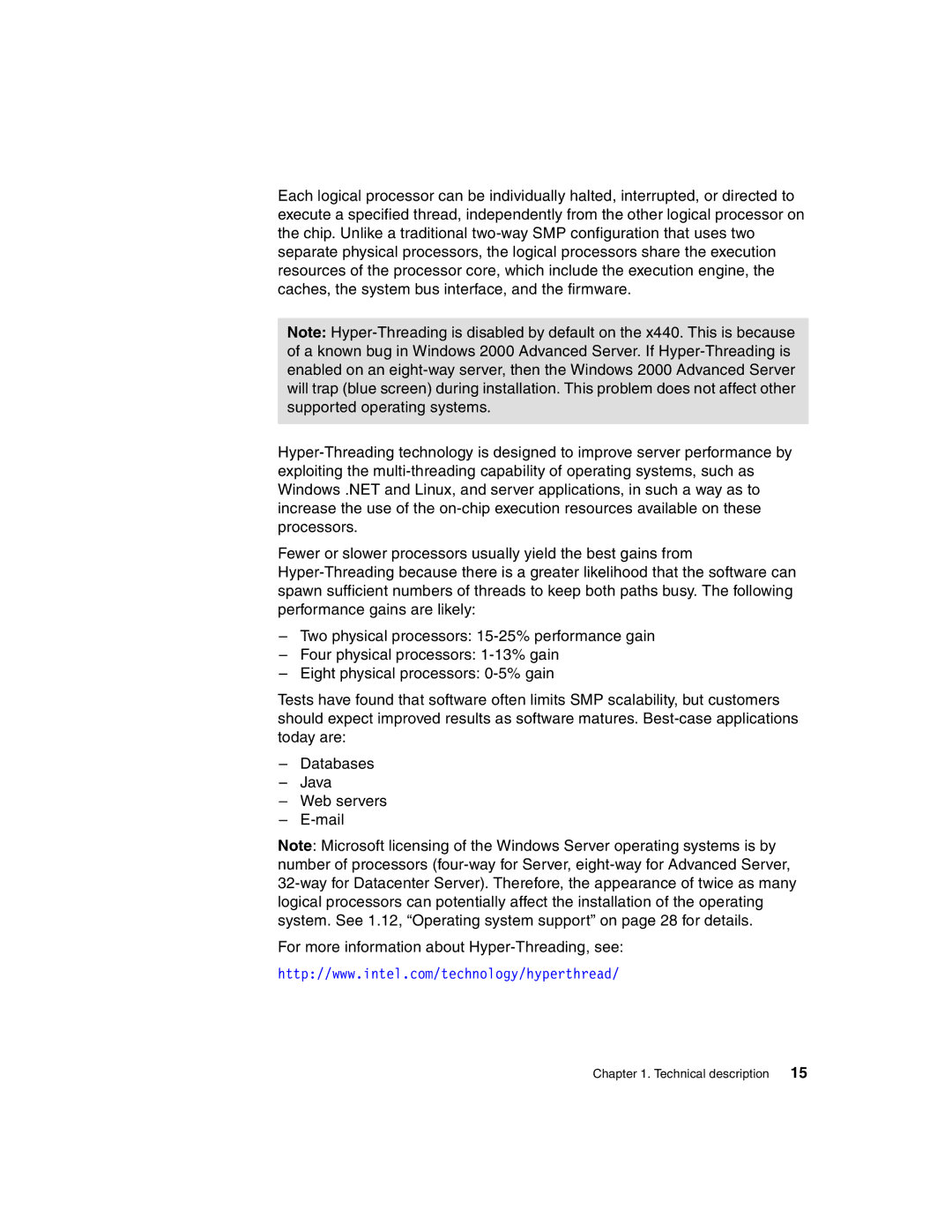Each logical processor can be individually halted, interrupted, or directed to execute a specified thread, independently from the other logical processor on the chip. Unlike a traditional two-way SMP configuration that uses two separate physical processors, the logical processors share the execution resources of the processor core, which include the execution engine, the caches, the system bus interface, and the firmware.
Note: Hyper-Threading is disabled by default on the x440. This is because of a known bug in Windows 2000 Advanced Server. If Hyper-Threading is enabled on an eight-way server, then the Windows 2000 Advanced Server will trap (blue screen) during installation. This problem does not affect other supported operating systems.
Hyper-Threading technology is designed to improve server performance by exploiting the multi-threading capability of operating systems, such as Windows .NET and Linux, and server applications, in such a way as to increase the use of the on-chip execution resources available on these processors.
Fewer or slower processors usually yield the best gains from Hyper-Threading because there is a greater likelihood that the software can spawn sufficient numbers of threads to keep both paths busy. The following performance gains are likely:
–Two physical processors: 15-25% performance gain
–Four physical processors: 1-13% gain
–Eight physical processors: 0-5% gain
Tests have found that software often limits SMP scalability, but customers should expect improved results as software matures. Best-case applications today are:
–Databases
–Java
–Web servers
–E-mail
Note: Microsoft licensing of the Windows Server operating systems is by number of processors (four-way for Server, eight-way for Advanced Server, 32-way for Datacenter Server). Therefore, the appearance of twice as many logical processors can potentially affect the installation of the operating system. See 1.12, “Operating system support” on page 28 for details.
For more information about Hyper-Threading, see:
http://www.intel.com/technology/hyperthread/

